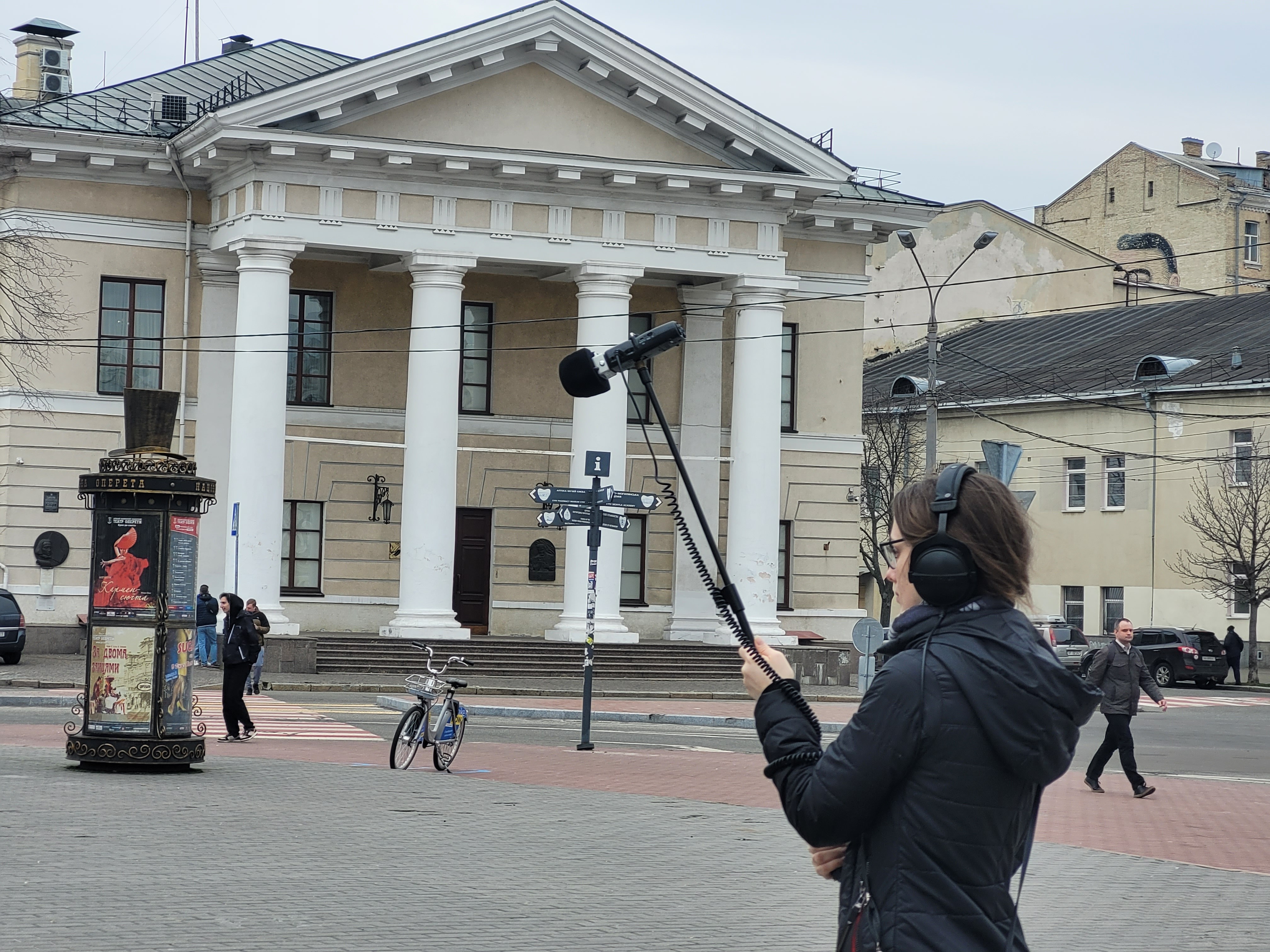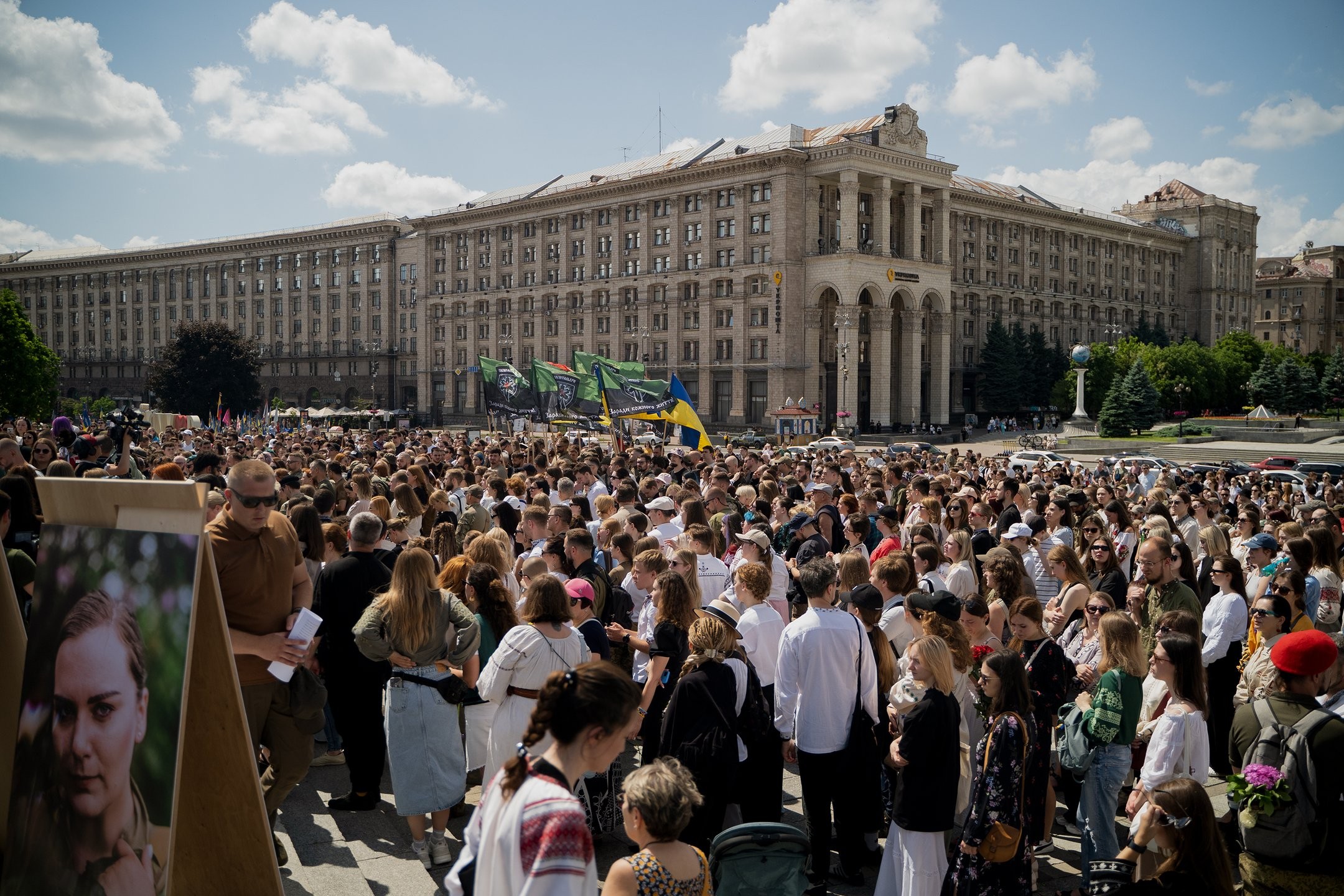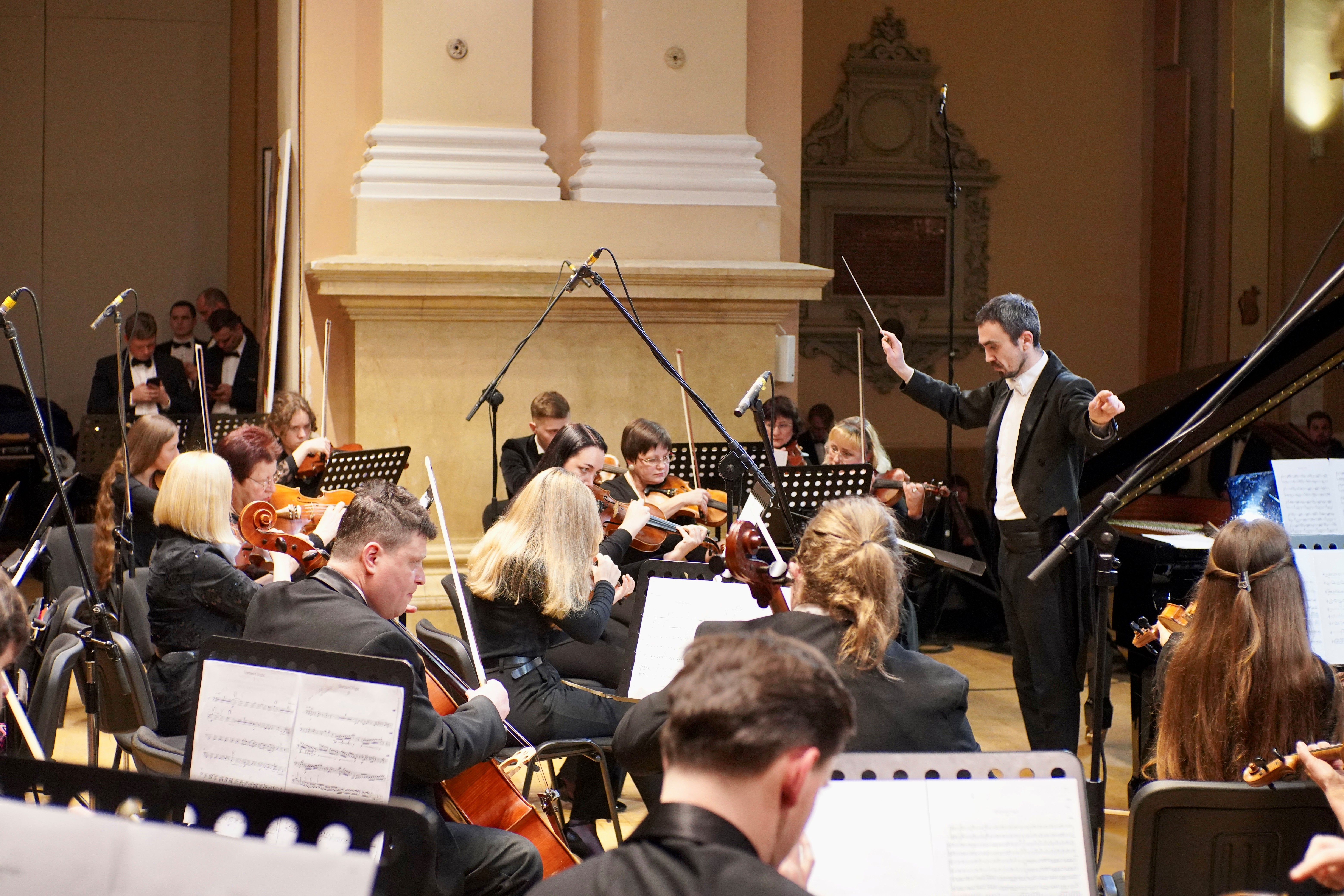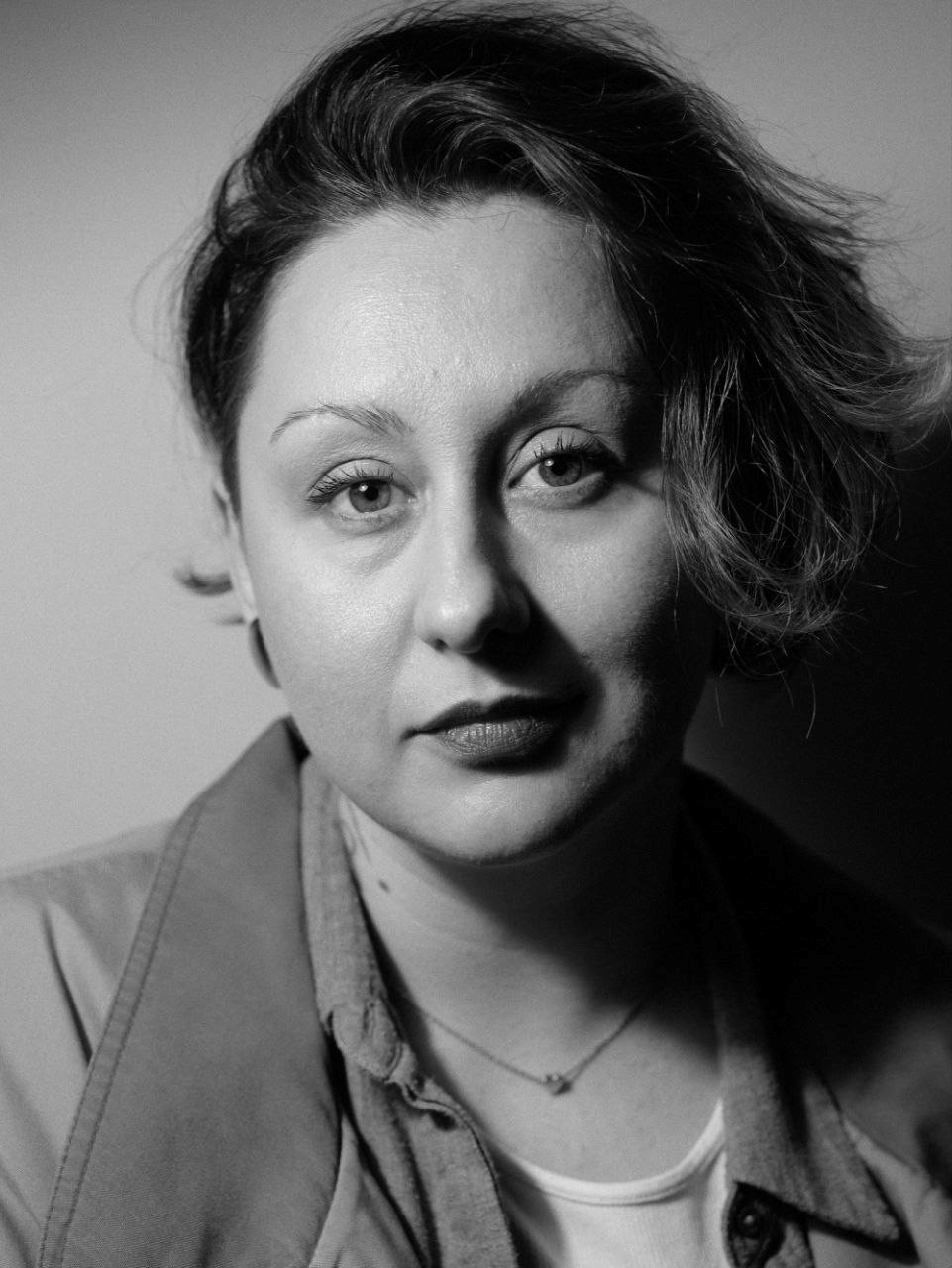As part of the project, Honcharuk recorded the authentic sounds that continue to resonate in Ukrainian towns and villages despite the horrors of war. The first episode attempts to listen to and understand Ukraine’s wartime soundscape as both a participant in and witness to history. Anna Hadetska, an expert in musical culture who appears in the documentary as a guest speaker, reflects on how our sonic environment has changed. Do we yearn for silence, or do we surround ourselves with music? What sounds do we fear, and which ones evoke phantom echoes?
“The war added an enormous sonic dimension to our lives—one that no one ever wished for, but which has radically reshaped our soundscape,” explains Hadetska, who says the phenomenon is most palpable for Ukrainians when they travel abroad and hear something—a garbage truck, for example—that reminds them of air defense systems. “It creates a strange dissonance—you know that sound shouldn’t exist in that place,” she says. “Or when we see and hear airplanes—we remember they can bring joy, not just fear. Sometimes even silence feels too tense, especially when you’ve just arrived in a peaceful place after nights of Russian attacks.”

The first episode also documents the process of music therapy for veterans. Honcharuk teamed up with Cultural Forces, a collective of Ukrainian musicians and soldiers who travel to hospitals and the frontlines, bringing songs and culture to wounded and active troops.
She joined the group on a visit to a Kyiv military hospital to capture how music is helping to restore the mental and emotional well-being of those who have served. In one particularly moving concert, PTSD-affected veterans sang Ukrainian folk songs, watched an allegorical puppet show about good and evil, and listened to poems written by mortar operator and musician Anton Lubiy in the trenches.
“I even saw some people crying,” says Lubiy, reflecting on the performance later. “I saw emotions that were difficult for them, as if they were grappling with something within themselves. They seemed to place themselves in those very situations,” he recalls, adding that it resonates with them. “That’s heartening. Those poems are supposed to work that way—they’re meant to evoke emotions, to offer a kind of therapy. And for me, too.”
Music also accompanies the most tragic moments of war: funeral ceremonies for the fallen. In the second episode, folklorist Liudmyla Ivannikova compares the burials of today’s heroes with the farewells organized for dissidents and patriots during the Soviet era. Through songs and rituals, she reveals the continuity of Ukrainian traditions of remembrance. She also recalls singing patriotic songs in 1989 at the reburial of Vasyl Stus, Yurii Lytvyn, and Oleksa Tykhyi, Ukrainian writers and political prisoners of the Soviet regime who perished in labor camps.
The second episode of What Music Means to Me is a tribute to all those who have given their lives for Ukraine, including Iryna “Cheka” Tsybukh, a paramedic and a journalist from Suspilne, Ukraine’s national public broadcaster. Parts of her funeral are documented in the series. Like other fallen defenders, Tsybukh’s burial was accompanied with music and communal singing. In her farewell letter, she requested that all those in attendance wear embroidered shirts or military camouflage and sing together, so as “to quiet sorrow with song.”

This is a powerful and deeply emotional episode, showing how, in the darkest moments, music becomes not only a way to express grief but also a means of healing, unity, and reflection. Mariya Frey, a fellow journalist, and board member at Suspilne who was a close friend of Tsybukh’s, participated in the documentary:
“When I received the news of Iryna’s death, the world felt silent and mute for a long time. The songs we sang together on the Maidan in Kyiv and at her farewell in Lviv brought sound back to my world,” she explains. “Singing intertwined with tears. And while some were taking deep breaths and wiping away tears that wouldn’t stop flowing, others picked up the song, and the music didn’t stop for a moment.”
“Someone once said that crying and singing at the same time is impossible, so for all of us, it was a true therapy — a therapy we never asked Iryna for, but which she gave us,” continues Frey. “None of the songs we shared with Iryna lost their power for me. “Whenever I hear them now, I often feel sorrow. Yet, I have very warm feelings of love and gratitude that I was able to be Iryna’s support and friend for so long. I truly want to remember the path we traveled together, and I hope Ukrainian music will help me in that,” she says.
Music responds immediately to intense, “hot” experiences like war. Composers have long reflected on past tragedies, but these new musical responses to Russia’s full-scale invasion serve as spontaneous memorials, born now, in real time. One such piece is the “Victorious Symphony” by Ukrainian composer Zoltan Almashi, which he began composing in Odesa after a night of Russian missile attacks on the city. The third episode of the documentary takes us to the Lviv Organ Hall, where we follow Almashi and conductor Ivan Ostapovych as they prepare to perform the symphony, from the first rehearsals all the way through to the world premiere.

“Of course, the title is very risky because we are still far from actual victory. But it’s a kind of magical practice. That’s how I see it: the only meaningful reason to make music right now is to return to magic,” reflects Almashi, who believes that 24 February 2022 marked the beginning of a new global era both in politics and art. “Art for art’s sake is in the past,” he says. “For instance, now I’m writing consciously about the here and now. My music is now consciously and purposefully ‘applied,’ but ‘applied’ metaphorically. I want it to be something that can be applied to wounds. I don’t know if that will truly happen, but I really want it to.”
As far as Honcharuk is concerned, Almashi’s desire has already become a reality. “Music has become our witness and healer, our protest and our memory,” she says. “It’s what holds us together when everything else falls apart. That’s what music means to us today.”
After three years of war, Ukrainians still don’t have a full answer as to what music means to them. But they know one thing for sure: they couldn’t survive without it.
Watch the full English version of What Music Means to Me on Kateryna Honcharuk’s YouTube channel or find podcasts in Ukrainian on Spotify channel.
Text of Kateryna Honcharuk; Portrait of Kateryna Honcharuk by Taras Vorobets; Photos by Kateryna Honcharuk and Yevhen Chervony.
Kateryna (Katrya) Honcharuk is a musicologist and a radio host. She taught music at the National Music Academy in Kyiv, participated in scientific conferences, went on folklore expeditions, and wrote articles about Ukrainian music for specialized outlets, including the newspaper Culture and Life, the magazine Music, *LiRoom, SLUH, Platfor.ma, Cultprostir, and Karabas Live. On October 1, 2015, on the International Day of Music, she began working at Ukrainian Radio (UR-1) with her own programs on contemporary folk music. In 2017, she joined the team of Radio Kultura, where she started creating radio documentaries and producing Ukrainian ethnic musicians for European Broadcasting Union projects.

